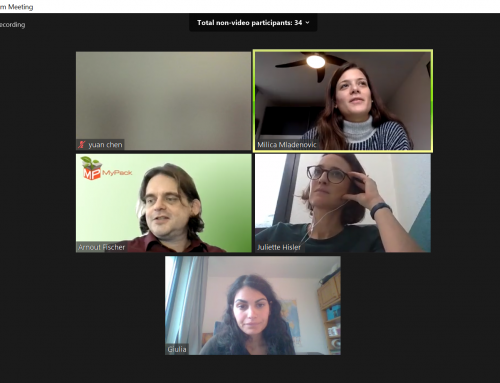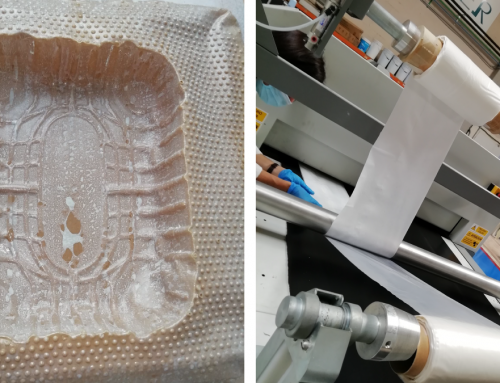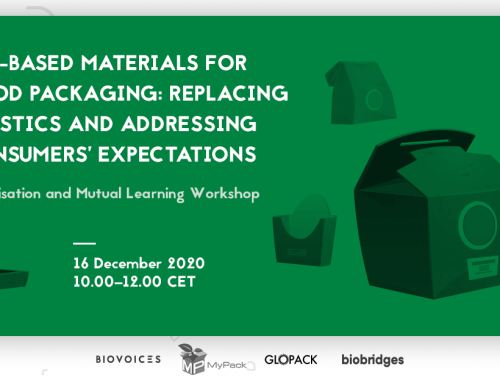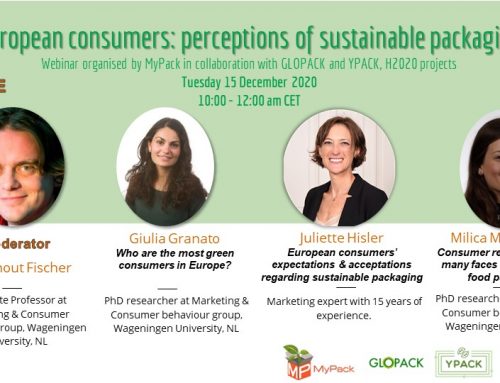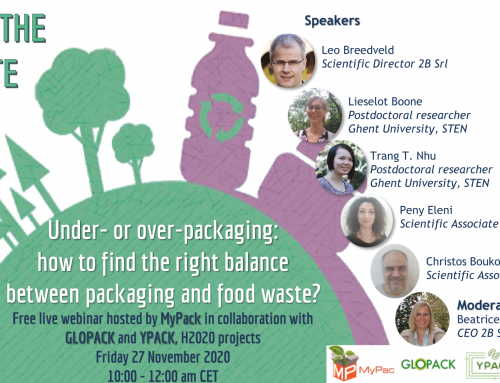How do you make food packaging from cheese whey?
The innovative YPACK food packaging is produced through a chain of processes that starts with the combination of knowledge and know-how and ends with a finished food packaging tray or flow pack bag. The YPACK consortium is made up of 21 partners with different expertise that all work together to create the final product. This article explains how a key raw material for the YPACK packaging is made and who does what.
PHBV, the biopolymer

One key ingredient throughout the YPACK process is Poly(3-hydroxybutyrate-co-3-hydroxyvalerate) commonly known as PHBV. This polymer is naturally produced by bacteria and is biodegradable, thus being a good alternative for traditional non-biodegradable synthetic polymers. The production of PHBV for the YPACK packaging started with the know-how of Professor Maria Reis and her team at the Faculty of Science and Technology at NOVA university (FCT/NOVA). They developed a process to produce PHBV in a three-step system.
The expertise was shared with Avecom, a company focused on developing bioproducts and applications with microorganisms. Avecom had the know-how to implement the FCT/NOVA three-step system on a 20 times larger scale. Their test facility, developed especially for YPACK, uses low-cost cheese whey and is able to produce over 600 kg of raw PHBV biomass in a month.
“NOVA has done a fantastic job providing the technical requirements to produce PHBV rich biomass from cheese whey. Avecom then engineered this know-how into an industrial process. It has been tough and challenging but we are happy with the results.”
Image: The YPACK team at AVECOM (from left) MEng Lutgart Stragier, Ph.D. Carlos Zamalloa, and MSc Jeroom Saelens.
How cheese whey becomes PHBV
The process of producing PHBV through microbes consists of three steps. The raw material is cheese whey, a by-product of the food industry. The future ambition is to produce PHBV next to a cheese factory, so the whey doesn’t need to be dried and shipped before processing.
- In the first step of production, cheese whey is converted into short-chain fatty acids by anaerobic microorganisms.
- Then, microorganisms able to accumulate PHBV are selected and grown by ensuring a specific environment under aerobic conditions.
- Finally, the microorganisms are overfed with the fatty acids. This leads to a PHBV accumulation process. The PHBV acts as the fat storage of the cells and this ‘fat’ is then used to make bioplastic.
As the production of PHBV is biological, not chemical, the microbes need to be fed around the clock. If the microbes are deprived of nutrients, they will use the formed PHBV as an energy source.
The output of the process at Avecom is raw PHBV, a paste of microbial cells filled with PHBV granules.
Image: Cheese whey powder (left) and liquid cheese whey and raw PHBV biomass (right).

From raw material to end product
The raw PHBV is then sent to BIOTREND (right image) who extracts the PHBV by separating the granules from the cellular debris. This pure PHBV powder becomes a key ingredient in our biodegradable packaging.

Project partner UMINHO produces a quality criteria compliant compound made of YPACK produced PHBV, commercial PHA, and micro cellulose. During the YPACK project, UMINHO will produce two tons of material and deliver it to YPACK partner LINPAC. Two tons is the minimal production capacity for the LINPAC production line to perform the pre-industrial casting, lamination and thermoforming of the food trays, the final YPACK product.
In order to make the trays suited for food packaging and keeping food fresh for longer, the tray is coated with several contact layer. Melodea, Bioinicia, Gaiker, and Technopackaging will all cooperate to develop these food contact layers and barrier/active layers.
As PHBV is made by bacteria this means other bacteria can break it down. This is the base of the biocompostability of packaging made with this compound. PHBV is the key ingredient of the green alternative that is offered by the whole YPACK team.
“Coming together is a beginning, staying together is progress, and working together is success.” – Henry Ford



